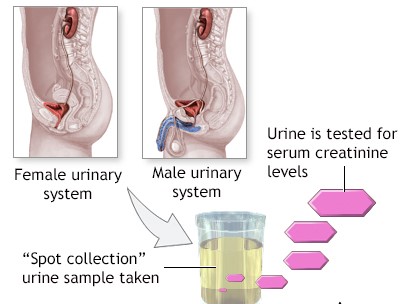A nurse is teaching a client who is 24 hr postpartum about breastfeeding. Which of the following client statements indicates an understanding of the teaching?
I will alternate the first breast that I offer my baby with each feeding.
I will store my breastmilk in the refrigerator up to 48 hours.
I will nurse my baby once every 4 hours.
I will offer my baby water between feedings.
The Correct Answer is A
Choice A reason: Alternating the first breast that is offered to the baby with each feeding can help ensure equal stimulation and drainage of both breasts, and prevent engorgement, mastitis, or milk supply problems.
Choice B reason: Storing breastmilk in the refrigerator up to 48 hours is not recommended, as it can reduce the quality and quantity of antibodies and nutrients in the milk. The optimal storage time for breastmilk in the refrigerator is up to 24 hours.
Choice C reason: Nursing the baby once every 4 hours is not sufficient, as it can lead to insufficient milk intake, dehydration, weight loss, or jaundice in the baby. The baby should be nursed on demand, or at least every 2 to 3 hours during the day and every 4 hours at night.
Choice D reason: Offering the baby water between feedings is not necessary, as it can interfere with breastfeeding and cause water intoxication or electrolyte imbalance in the baby. Breastmilk provides enough hydration and nutrition for the baby.
Nursing Test Bank
Naxlex Comprehensive Predictor Exams
Related Questions
Correct Answer is C
Explanation
Choice A reason: Tuna can is not a safe food choice for a client who has food allergies because it may contain traces of other fish or shellfish that can trigger an allergic reaction. Tuna can should be avoided or checked for allergen labels before consuming.
Choice B reason: Gravy beef is not a safe food choice for a client who has food allergies because it may contain gluten, soy, or dairy products that can trigger an allergic reaction. Gravy beef should be avoided or checked for allergen labels before consuming.
Choice C reason: Apple pie is a safe food choice for a client who has food allergies because it is unlikely to contain common allergens, such as nuts, eggs, or milk. Apple pie is made from cooked apples, sugar, flour, and butter, which are low-risk ingredients for food allergies. Apple pie should be stored in the refrigerator or freezer after cooling to prevent spoilage.
Choice D reason: Bread is not a safe food choice for a client who has food allergies because it may contain gluten, wheat, or sesame seeds that can trigger an allergic reaction. Bread should be avoided or checked for allergen labels before consuming.
Correct Answer is A
Explanation
Choice A reason: Serum creatinine 3.5 mg/dL is high and indicates the need for further assessment. Creatinine is a waste product of muscle metabolism that is filtered by the kidneys. High creatinine levels can indicate kidney damage or impaired renal function.
Choice B reason: Hematocrit 45% is within the normal range (37-47% for women, 40-50% for men), and it does not indicate the need for further assessment. Hematocrit is the percentage of red blood cells in the blood. Low hematocrit levels can indicate anemia, bleeding, or hemolysis.
Choice C reason: Blood urea nitrogen 18 mg/dL is within the normal range (7-20), and it does not indicate the need for further assessment. Blood urea nitrogen is a waste product of protein metabolism that is filtered by the kidneys. High blood urea nitrogen levels can indicate dehydration, kidney damage, or high protein intake.
Choice D reason: Sodium 140 mEq/L is within the normal range (135-145), and it does not indicate the need for further assessment. Sodium is an electrolyte that helps maintain fluid balance, blood pressure, and nerve impulses. Low or high sodium levels can cause confusion, seizures, or coma.

Whether you are a student looking to ace your exams or a practicing nurse seeking to enhance your expertise , our nursing education contents will empower you with the confidence and competence to make a difference in the lives of patients and become a respected leader in the healthcare field.
Visit Naxlex, invest in your future and unlock endless possibilities with our unparalleled nursing education contents today
Report Wrong Answer on the Current Question
Do you disagree with the answer? If yes, what is your expected answer? Explain.
Kindly be descriptive with the issue you are facing.
